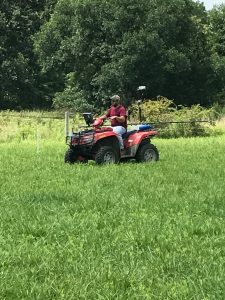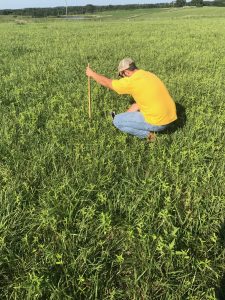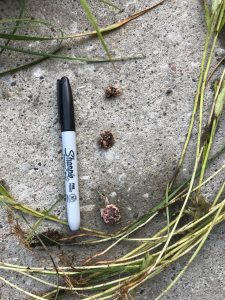Missouri State University Student Nick Matheney spent the summer working at the University of Missouri Forage Systems Research Center in Linneus, Mo., looking at the other side of this project. Check out his summer wrap up!
The warm season legume, sunn hemp, originated from India where it was used to feed cattle as a dry season crop. During this grazing study Josh Tooley, an MU graduate student, and I set out to see if we could sow it into Missouri’s tall fescue pastures. Not only did we anticipate that it could be used as a nitrogen fixation for the fall season on fescue, but also be used as a warm season forage during the time of summer months. To start the project out, we outlined four different replications with three separate groups of stocker cattle being rotated through a special treatment, which included a straight fescue pasture with nitrogen fertilizer added and sun hemp sown in the fields.
Throughout the weeks we observed the pastures, we would scan using a sonic sensor to receive the forage amount that was available within the different paddocks assigned. As the data was analyzed, we created grazing wedges to follow for the cattle rotations. After the cattle grazed the pastures to the desired heights, we would rotate them onto the next pasture. A vital part of the research was taking quality samples from each pasture to test the nutrition of the different forages that was available to the cattle. The sampling was done to calculate the nitrogen levels being out into the system by the sunn hemp in the pastures.
The study continues even though Nick is back in classes at Missouri State University for the fall. The initial results are looking good and will be passed along as soon as the study wraps up for year one!



